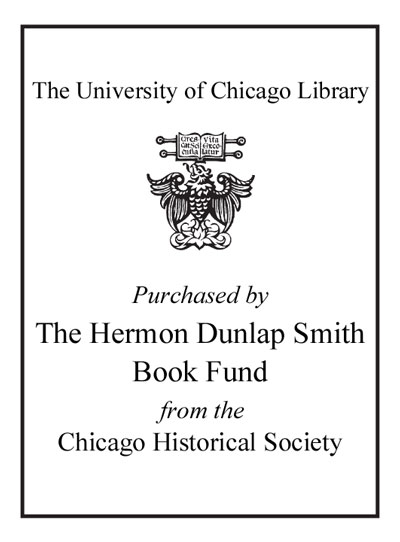Ashcan art, Whiteness, and the unspectacular man /
Saved in:
| Author / Creator: | Boylan, Alexis L., author. |
|---|---|
| Imprint: | New York, NY : Bloomsbury Academic, 2017. ©2017 |
| Description: | xvi, 264 pages, 32 unnumbered pages of plates ; 24 cm |
| Language: | English |
| Subject: | |
| Format: | Print Book |
| URL for this record: | http://pi.lib.uchicago.edu/1001/cat/bib/11044239 |
MARC
| LEADER | 00000cam a2200000 i 4500 | ||
|---|---|---|---|
| 001 | 11044239 | ||
| 003 | ICU | ||
| 005 | 20170505051313.9 | ||
| 008 | 160930t20172017nyuaf b 001 0 eng | ||
| 010 | |a 2016045135 | ||
| 040 | |a DLC |b eng |e rda |c DLC |d OCLCO |d OCLCF |d YDX |d BDX |d BTCTA |d OCLCQ |d ERASA |d YDX | ||
| 020 | |a 9781501325755 |q hardcover ; |q alkaline paper | ||
| 020 | |a 1501325752 |q hardcover ; |q alkaline paper | ||
| 035 | |a (OCoLC)959922736 | ||
| 042 | |a pcc | ||
| 043 | |a n-us--- | ||
| 050 | 0 | 0 | |a ND1460.M38 |b B69 2017 |
| 082 | 0 | 0 | |a 700/.45211 |2 23 |
| 100 | 1 | |a Boylan, Alexis L., |e author. |0 http://id.loc.gov/authorities/names/nr2004028561 |1 http://viaf.org/viaf/22094438 | |
| 245 | 1 | 0 | |a Ashcan art, Whiteness, and the unspectacular man / |c Alexis L. Boylan. |
| 264 | 1 | |a New York, NY : |b Bloomsbury Academic, |c 2017. | |
| 264 | 4 | |c ©2017 | |
| 300 | |a xvi, 264 pages, 32 unnumbered pages of plates ; |c 24 cm | ||
| 336 | |a text |b txt |2 rdacontent |0 http://id.loc.gov/vocabulary/contentTypes/txt | ||
| 337 | |a unmediated |b n |2 rdamedia |0 http://id.loc.gov/vocabulary/mediaTypes/n | ||
| 338 | |a volume |b nc |2 rdacarrier |0 http://id.loc.gov/vocabulary/carriers/nc | ||
| 504 | |a Includes bibliographical references and index. | ||
| 505 | 0 | |a What are you looking at? Bodies, desire, and portraits -- Working hard or hardly working? Labor, race, and manhood -- Sex sells: Desire, money, and male bodies -- Men seeking men. | |
| 520 | 8 | |a Arriving in New York City in the first decade of the twentieth century, six painters - Robert Henri, John Sloan, Everett Shinn, Glackens, George Luks, and George Bellows, subsequently known as the Ashcan Circle -f aced a visual culture that depicted the urban man as a diseased body under assault. Ashcan artists countered this narrative, manipulating the bodies of construction workers, tramps, entertainers, and office workers to stand in visual opposition to popular, political, and commercial cultures. They did so by repeatedly positioning white male bodies as having no cleverness, no moral authority, no style, and no particular charisma, crafting with consistency an unspectacular man. This was an attempt, both radical and deeply insidious, to make the white male body stand outside visual systems of knowledge, to resist the disciplining powers of commercial capitalism, and to simply be with no justification or rationale. Ashcan artists reconfigured urban masculinity for national audiences and reimagined the possibility and privilege of the unremarkable white, male body thus shaping dialogues about modernity, gender, and race that shifted visual culture in the United States. | |
| 650 | 0 | |a Masculinity in art. |0 http://id.loc.gov/authorities/subjects/sh96012017 | |
| 650 | 0 | |a Ashcan school of art. |0 http://id.loc.gov/authorities/subjects/sh85008591 | |
| 650 | 0 | |a Painting, American |y 19th century |x Themes, motives. | |
| 650 | 0 | |a Painting, American |y 20th century |x Themes, motives. | |
| 650 | 0 | |a Art and society |z United States |x History |y 19th century. | |
| 650 | 0 | |a Art and society |z United States |x History |y 20th century. |0 http://id.loc.gov/authorities/subjects/sh2009114825 | |
| 650 | 7 | |a Art and society. |2 fast |0 (OCoLC)fst00815432 | |
| 650 | 7 | |a Ashcan school of art. |2 fast |0 (OCoLC)fst00818531 | |
| 650 | 7 | |a Masculinity in art. |2 fast |0 (OCoLC)fst01011039 | |
| 650 | 7 | |a Painting, American |x Themes, motives. |2 fast |0 (OCoLC)fst01050660 | |
| 651 | 7 | |a United States. |2 fast |0 (OCoLC)fst01204155 | |
| 648 | 7 | |a 1800-1999 |2 fast | |
| 655 | 7 | |a History. |2 fast |0 (OCoLC)fst01411628 | |
| 776 | 0 | 8 | |i Online version: |a Boylan, Alexis L., author. |t Ashcan art, whiteness, and the unspectacular man. |d New York : Bloomsbury Academic, 2017 |z 9781501325762 |w (DLC) 2016045819 |
| 903 | |a HeVa | ||
| 929 | |a cat | ||
| 999 | f | f | |i e5fe6c1c-b5f0-5efa-aac1-67cd55c6e9b1 |s b19f7b5f-9aca-52ff-812a-d125981a7070 |
| 928 | |t Library of Congress classification |a ND1460.M38 B69 2017 |l JRL |c JRL-Gen |i 9536972 | ||
| 927 | |t Library of Congress classification |a ND1460.M38 B69 2017 |l JRL |c JRL-Gen |e HESM |b 113722337 |i 9785530 | ||

